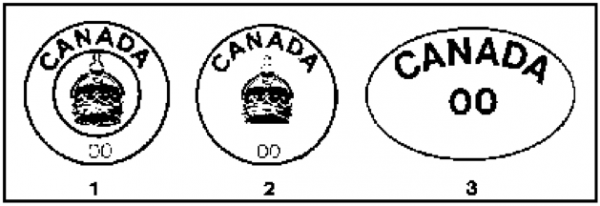Inspection and Grading of Meats and Poultry
The Meat Inspection Process
Meat inspection is designed to determine the health of animals both prior to death (ante mortem) and after death (post mortem). In federal meat inspection plants, the process is carried out by primary product inspectors (PPIs) from the meat and poultry division of Agriculture and Agri-Foods Canada. The PPIs are overseen by a veterinarian. PPIs also do the inspection in provincial meat plants, but a veterinarian is called in only when a further diagnosis is required.
All domestic animals going into the food chain are inspected prior to harvesting (ante mortem). Some of the inspection methods are:
- Observing the animals’ behaviour that may indicate any signs of disease
- Isolating animals that show signs of disease, illness, or injury
- Verifying animal identification records and tags
- Overseeing humane treatment of animals during herding and slaughter
Following harvesting, animals are inspected by either a provincial or federal inspector. In the case of beef, inspectors examine the following:
- Head, an array of lymph nodes near the tongue, and the tongue itself
- Esophagus and spleen
- Lungs and heart
- Bile duct and liver
- Other accessible carcass lymph nodes
- Diaphragm and kidneys
- Carcass internal and external surfaces
Lamb, pork, and poultry carcasses receive similar inspections that focus on the particular species and associated health issues.
Some of the hazards that may occur during the slaughter process are:
- Contamination of the carcass during the removal of the hide and digestive tract
- Cross-contamination during the splitting of the carcass
- Bacterial growth during the chilling and aging of carcasses
- Cross-contamination from specific animal tissue that is high risk for disease, such as BSE specified risk materials (SRMs) (e.g., spinal cord, brain)
Once the meat is approved for human consumption, the inspection stamp can be made along the length of the carcass. The stamp appears as a blue circle with the word “Canada” inside the circle rim, with a crown in the centre and the plant number at the bottom (Figure 13).

Media Attributions
Parts removed from beef animals over 30 months old to lessen the risk of BSE. Some of the parts removed are the head, brain, part of the intestines, and most of the backbone.
Proof of inspection that the harvested animal is fit for human consumption.

